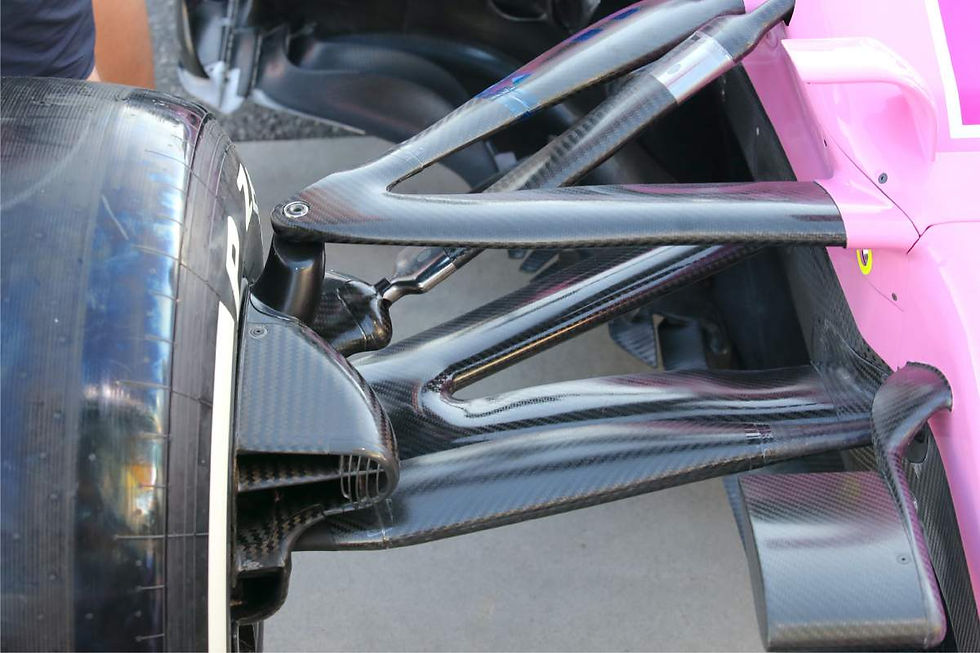Vehicle Dynamics Explained: An online series for Racecar Engineering Magazine
- Jahee Campbell-Brennan

- May 18, 2020
- 2 min read
Updated: Jul 31, 2021
We have a series of articles on vehicle dynamics fundamentals published on the Racecar Engineering website.
A less understood but fundamental branch of motorsport engineering is racecar vehicle dynamics. To de-mistify this vital area of motorsport engineering, we have written an exclusive series of articles, explaining everything you need to know about racecar vehicle dynamics. (click the images to read the articles on their website.)
Starting with an intro, what is vehicle dynamics?
1 - Tyre Dynamics:
Covering the mechanisms of grip generation and adhesion as well as slip angle, cornering stiffness and what conditions achieve optimum tyre performance.
This article covers the wheel and tyre assembly, the structural suspension members and explores the influence of static geometry parameters on vehicle performance.
The influence of suspension kinematics on tyre performance, as well as the importance of controlling camber, toe and the influence of caster and other key characteristics into vehicle dynamics. Compliance is explored with relation to its affect on vehicle performance and how it can be used to our advantage.
Springs and dampers are key in defining and optimising both the variation in contact pressure and how the vehicle’s mass loads the tyre in transient conditions. This article explores the influence of the spring & damper system on the unsprung and sprungs masses and gives insight into what to search for in an optimum setup for a particular scenario.
The relationship between mass, Centre of Gravity (CoG) and weight transfer will be explored, as well as concepts such as the roll centre, roll couple, polar moments and their influence on racecar vehicle dynamics. Also to be considered are the modes of chassis displacement generated by force and moment inputs: roll, pitch, heave and warp.
Modern sensor technology has unlocked a wealth of information from which we can now view a vehicles behaviour with great accuracy. In the final piece of the series we'll explore how this technology is used on the race car chassis to create a comprehensive understanding of behaviour. With the this understanding we can make adjustments to the car, or guide the driver in extracting the most they can from a lap.
That concludes the series. We are always writing articles both in print and for the website of Racecar Engineering Magazine so check back for regular updates..!
Be inspired.
![Wavey Dynamics Logo #2 [Dark, Transparent].png](https://static.wixstatic.com/media/67d9bf_65249c4015a14615b48d0aca40b0a4b0~mv2.png/v1/fill/w_269,h_67,al_c,q_85,usm_0.66_1.00_0.01,enc_avif,quality_auto/Wavey%20Dynamics%20Logo%20%232%20%5BDark%2C%20Transparent%5D.png)













Comments